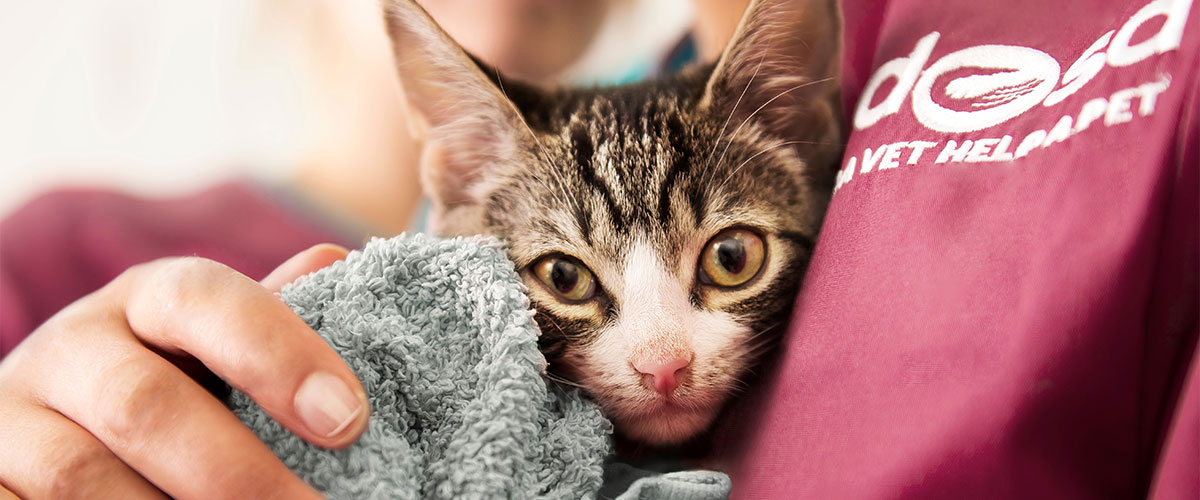Persian Breed Information
Persians aren’t usually highly active cats and may display occasional bursts of energy rather than regular ones. They don’t tend to be particularly vocal, and you may not find them climbing onto your lap, but they enjoy your attention when they have it. You are more likely to find a Persian curled up in their favourite spot than climbing over furniture.
Breed-related health problems:
Owners are, understandably, upset when their cat develops a health problem linked to its breed. Often they wish they’d known what problems the breed was prone to have. The potential health problems that Persians are prone to include:
- Polycystic kidney disease (PKD) – a condition where cysts, present in the kidneys from birth, gradually increase in size until the kidney cannot function normally, resulting in kidney failure. A genetic test is available for this disease.
- Progressive retinal atrophy – a genetic eye problem which causes progressive blindness. Genetic tests are available to check for the disease.
- Hip dysplasia – an abnormality of the hip joints. It causes lameness in the hind legs and can make walking difficult. Cats with hip dysplasia are more likely to get osteoarthritis.
- Brachycephalic airway syndrome – Because of their short, flatter face, Persian cats struggle to breathe properly. Many get short of breath quickly and suffer from inflammation and swelling in their airways.
- Primary seborrhoea – causes scaling and greasy skin which can affect the whole body.
- Dermatophytosis (ringworm) – Persian cats are very susceptible to this fungal condition, which causes itching, fur loss and crusting and scaling of the skin. It can be transmitted to people.
- Hypertrophic cardiomyopathy – a condition where the volume of blood that the heart pumps with each contraction is reduced. This can cause fainting, tiredness and other signs of heart disease.
- Feline Infectious Peritonitis (FIP) – this infectious condition is usually fatal. Persian cats are more likely to develop this than non-pedigree cats.
- Cryptorchidism – one or both of the testicles stays in the body rather than descending into the scrotum. This makes the testicle(s) more likely to develop cancer.
We’d recommend discussing the medical history of your potential kitten’s parents and grandparents, and think very carefully before taking on a cat with any of the health conditions listed above evident in the family line.
Read our statement on the problems with brachycephalic (‘flat faced’) breeds.
Coat care:
Persians’ coats are prone to matts and tangles so they need to be combed daily to prevent knots - getting them used to grooming at an early age means you will be able to groom them easily throughout their lives.
Estimated cost over lifetime:
These costs are based on essential items such as:
- A bed, litter and tray
- Grooming items
- Food and bowl
- Preventive treatment such as flea, worming, vaccinations and neutering
- Toys
- Cat carrier
- Pet insurance
This does not include initial purchase cost, non-essential items (such as holiday care) or potential veterinary treatment of which an excess needs to be paid before your pet may be covered by pet insurance.
Insure your Persian Cat with PDSA:
1 in 3 pets need vet treatment each year and vet bills can come to hundreds of pounds. PDSA Pet Insurance can give you peace of mind when your pet is poorly, especially for breeds like Persian Cats that are prone to certain conditions. PDSA Pet Insurance offers:
- Dog and cat insurance policies from 8 weeks of age.
- 24/7 veterinary advice online or over the phone with Petcall.
- Manage your policy online with the PDSA Insure Hub.
- Monthly payment at no extra cost.
By insuring your Persian Cat with PDSA Pet Insurance you’ll also be helping to provide vet care to some of the UK’s neediest pets.
For more information on taking care of your cat please visit our kitten and cat section.
Rehoming from a reputable source:
Where you get a cat from can have a big effect on how healthy and happy it is for the rest of its life. Find out where our PDSA vet experts recommend you get your cat from.
| Average lifespan | 12-15 years |
|---|---|
| Coat length | Long |
| Possible health problems | Polycystic kidney disease, Progressive retinal atrophy, Hip dysplasia, Brachycephalic airway syndrome, Primary seborrhoea, Dermatophytosis (ringworm), Hypertrophic cardiomyopathy, Feline infectious peritonitis (FIP), Cryptorchidism |
| Average purchase cost | £500 |
| Estimated cost over lifetime | £13,600-£16,900 |
| Average weight | 4.6kg |
| Breed group | Persian |

